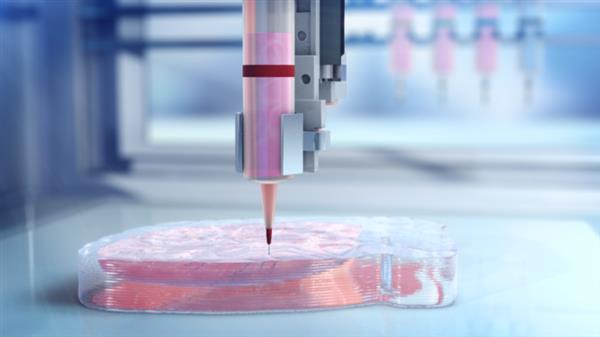In June 2018, US-based biotech company BIOLIFE4D successfully demonstrated its ability to 3D bioprint human cardiac tissue in patch form in just a few days, well ahead of 6-8 month development time predicted in scientific literature. Although bioprinting is still in infancy, it holds a wealth of promise for the future of healthcare, says leading data and analytics company GlobalData.
Bioprinting is a form of 3D printing that employs living cells or ‘bioink’, as the printing material. Generally, bioink is deposited onto a gel in layers, resulting in a 3D-printed biological structure. BIOLIFE4D’s technique uses a patient’s own white blood cells, which are reprogrammed into induced pluripotent stem cells and then cardiac cells.
Besides BIOLIFE4D, companies such as TeVido, BioDevices and Organovo are innovating with proprietary bioprinting technologies. TeVido is developing nipple reconstruction implants for breast cancer survivors by employing a patient’s own skin cells in a proprietary process. Organovo creates functional 3D human tissue products using the company’s proprietary NovoGen Bioprinters and bioink technology. The company’s first program is targeting rare liver disease.
Jennifer Ryan, Medical Device Analyst at GlobalData, says: “Innovations such as bioprinting are part of the next wave of medical advancement and hold a wealth of promise for the future of healthcare. Bioprinted tissue can be used for drug development and safety, as well as other medical research efforts. In the future, the aim is to create replacement organs for patients in need of a transplant.”
According to American non-profit organization, United Network for Organ Sharing (UNOS), nearly 15,000 patients in the US are currently on the organ transplant waiting list and 20 patients die each day, on average, while waiting for a transplant.
The need for organ transplants continues to far exceed the number of registered donors, leaving patients with no option but to wait. Advancements in bioprinting capabilities aim to one day 3D print an entire functioning organ, complete with all component parts, for transplant patients.
After successfully bioprinting a cardiac patch, BIOLIFE4D has now focused its attention on printing other heart constructs, such as heart valves and blood vessels and a mini-heart as it seeks to progress to 3D bioprinting a full human heart.
Ryan concludes: “Already other 3D printing techniques such as selective laser sintering and material jetting are employed in the medical device industry to create a variety of products such as surgical guides and patient-specific orthopedic implants. With the progression of bioprinting technology, 3D printing will have an even greater impact on patient treatment through evolving drug therapies and engineered organ replacements.”

